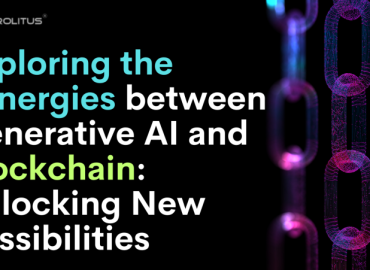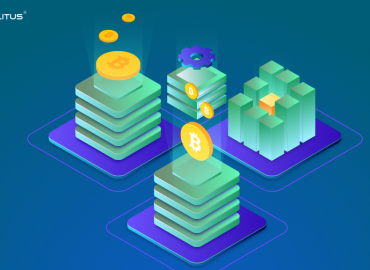When it comes to non-fungible tokens (NFTs) and decentralized finance, Solana has quickly become one of the most widely used blockchains in the entire globe (DeFi). There is no doubt that interest in Solana NFTs, in particular, is picking up steam, and it is currently positioned as the fourth most popular cryptocurrency on a global scale.
Users are looking for platforms that can facilitate transactions that are both quicker and more cost-effective; Solana fulfills both of these requirements. As a direct consequence of this, a number of the most prominent platforms are either in the process of integrating with Solana or already doing so. And as an ever-increasing number of integrations are added, people are transitioning to Solana at an ever-increasing rate.
In this regard, Solana NFTs are among the more significant developments that have occurred on Web3 in recent times. On the other hand, onboarding to new blockchains and NFT marketplaces might, unfortunately, be a little bit intimidating. Thankfully, assistance is available through Nft Now. This guide will take you through all you need to know to engage in the ecology that is found in Solana. In this article, we will discuss what Solana is, how it operates, why there is so much interest in Solana crypto and NFTs, and how you may get the most out of this exciting new world.
What is Solana?
Solana is an open-source and distributed public blockchain. Solana is what’s known as a “layer 1 chain” in the Web3 protocol stack, meaning it provides the skeleton of a blockchain network upon which more advanced networks can be built.
Solana, like Ethereum, is a blockchain platform that provides its own coin (called Sol) and a distributed computing platform for facilitating the deployment of smart contracts and the interoperability of distributed apps (dApps). Solana’s blockchain design, upon deeper inspection, presents various innovative ideas and competes with Ethereum.
Solana presents a novel method of addressing the issue of scalability. While most blockchain projects on the same mission use sharding or layer-2 solutions, Solana combines software algorithms with continuously improving hardware performance, based on Moore’s Law, which states that the speed and capability of computers can be expected to double every two years with technological progress.
How does Solana work?
Solana is powered by two distinct consensus mechanisms: Proof-of-Stake (PoS) and Proof-of-History (PoH). As opposed to Ethereum and other blockchains, which use Proof-of-Work (PoW) processes, these algorithms have several advantages.
In a nutshell, Proof of Work (PoW) has computers compete to add blocks and transactions to a blockchain by solving challenging problems. Due to the enormous amount of computing power required to answer these riddles, enormous quantities of power are wasted. Solana eliminates such complications. This means it has far better TPS performance and doesn’t have the same negative effects on the environment.
Solana NFT marketplace
Solana NFT marketplaces are gaining popularity, and big platforms such as OpenSea are integrating Solana.
Magic Eden is likely the most popular Solana NFT marketplace besides OpenSea. Users can produce, sell, and buy NFTs on the platform. If you don’t want to pay to list your NFTs, it’s an excellent marketplace to use.
Solanart is another well-known marketplace that supports a variety of well-known projects, including Degenerate Ape Academy, Aurora, and Solpunks. The transaction charge for each successful NFT sale is 3%.
Solana’s proof of history
Solana uses PoH to keep track of the time it takes to travel between nodes with precision. People who are selected to function as validators are obligated to follow the blockchain’s prescribed schedule and format of events, making this stage crucial. PoH will allocate intervals during which each validator can examine the amount of time allocated to slot leaders in real-time before approving a block for broadcast to the network.
The most challenging issue in distributed networks is reaching a consensus on the order of events and the timing of those events because nodes in the network cannot rely on the timestamps of messages received from other nodes. Solana’s Proof of History (PoH) protocol establishes a cryptographically sound time source across the network, allowing it to circumvent this problem.
A high-frequency Verifiable Delay Function (VDF), Proof of History takes a finite number of evaluation steps yet generates a unique result that can be independently confirmed by anyone. Messages received by a node can be securely dated and sequenced, allowing it to construct the next block without waiting for the entire network to catch up. The time and effort needed to reach a decision is thereby reduced.
Final Thoughts:
Solana, one of the most innovative blockchains available, has implemented the Proof of History methodology to increase the speed of transactions on their network and address the scalability issue that has plagued several cryptocurrencies.
Solana is a quick, scalable, and open-source platform. However, it might be challenging to keep track of all of your significant financial dealings. Bitcoin, for example, uses a timestamp to group related transactions into blocks before recording them; this method takes considerable time due to the necessity for unanimity among all nodes. However, this is not the case with Solana.
Solana’s Proof-of-History consensus boosts blockchain performance by permanently storing transaction timestamps alongside other data. As a result, the system can track transactions because it has access to a complete record of all past ones. The consensus process thus acts as the network’s timekeeper. Therefore, Solana expedites the security and privacy of its transaction monitoring while maintaining its high-performance standards.





